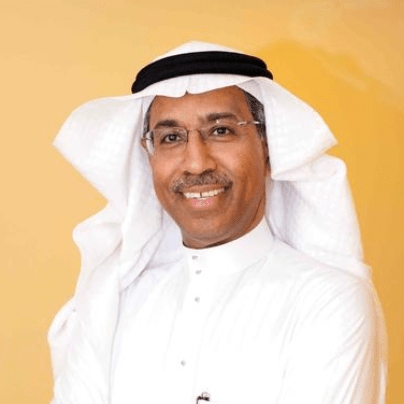VIA SATELLITE: What do you think will be the three key talking points of SATELLITE 2020? What are you most looking forward to finding out about the show this year?
Balkheyour: Everyone is going to head into SATELLITE 2020 hoping to come out at the end of the week with a renewed sense of optimism on the future of the industry. Satellite and launcher prices are coming down, orders for new satellites should pick up again. The pressure on capacity pricing is leveling off and demand is still healthy. The show may provide some decision guidelines over three main issues. On the infrastructure side, how manufacturers and launchers have further developed their platforms and processes to significantly reduce the cost in a market where prices were slashed down over the past five years and made it difficult even to replace existing fully utilized satellites. On the business disruption side, are the general economic models of Low-Earth Orbit (LEO) programs finetuned yet? Finally, how can Internet of Things (IoT) and Machine-to-Machine (M2M) be incorporated as a main revenue stream for satellite operators, and how this would compare to telecom operators’ local efforts?
Suwansiri: Certainly, NGSO will continue to be the talk of town also this year. In addition, I am very much looking forward to hearing about 5G and the integration of satellite into the telecom ecosystem. Last but not least, the issue of C-band spectrum for 5G will remain a hotly contested topic.
Whitehill: Without a doubt the number one talking point will be the hype around the new entrants and their LEO constellations. We certainly think the LEO bubble has now burst and nobody has yet presented a sensible business case for the so called “mega constellations,” so at SATELLITE I shall be keenly listening for someone to persuade me that LEO is anything more than a misguided folly. The demise of LeoSat will be the first of many failed LEO ventures. Simply bringing satellites closer to earth is not going to solve those issues and although the advantages of low-latency and polar connectivity will address niche markets, the operational cost, replenishment cycles, collision vulnerability, interference mitigation, and complexity in space and on the ground are considerable business risks yet to be tested. It all comes down to customer requirements and a realistic assessment of the revenue potential. Satellite 5G will also be a key talking point at the show and I will be interested in the progress being made regarding standards and interoperability.
VIA SATELLITE: There will undoubtedly be a lot of talk about how some of the traditional operators in Geostationary Orbit (GEO) may look to supplement what they are doing in LEO. How would you describe your operator’s non-GEO strategy?
Balkheyour: We are still a strong GEO operator and plan to stay away from investing in LEOs now. We believe in GEO and fully appreciate its competitive advantage. As such, we are a little bit cautious when it comes to jumping on the latest industry bandwagon, especially when it is as capital intensive as LEO constellations. Having said that, we have been engaged in talks with the most promising projects and will continue to do so until we see a suitable moment to commit. Such a moment will come once we are convinced of the business case and the technology. Our focus is on two separate fronts: utilizing LEO for narrowband for IoT/M2M activities, and LEOs and Medium-Earth Orbit (MEO) for broadband. LEO systems for narrow broadband are technically proven and significantly less costly and allow to develop markets in few years. LEO systems for broadband have already started suffering many setbacks due to complexity and high cost of inter-satellite optical links, lack of clear return on investment for the shareholders, and regulatory hurdles.
Drozdova: In the countries like Russia, located in the Northern hemisphere, polar orbits open great opportunities for providing mobility applications, expanding digital inclusion of the communities leaving above the Polar Circle, as well as increasing quality of service and availability of communications services to people and business. Moreover we plan to use Express-RV satellites to improve availability of broadcasting service in the North, and provide satellite digital radio with nationwide coverage for the first time in Russia.
Suwansiri: We believe in the co-existence of Non-Geostationary (NGSO) and GEO constellations. It all depends on the markets you plan to serve and the solutions you plan to bring to market. Of course, the non-GEO playing field is dominated by global players due to the immense capital investment required. But I believe our experience as a broadband satellite operator and in-depth experience in local markets, in combination with our presence in many countries in Asia-Pacific, makes for a sound value proposition for non-GEO operators to building their networks out on the ground with us. Thaicom is a potential partner when it comes to the deployment and marketing of broadband services in Asia Pacific. I can say that a lot of effort needs to be put into the acquisition of landing rights and into building partnerships on the ground. This will be challenging for the non-GEO players.
Whitehill: The business case for LEO’s has yet to be proven both on paper and in service. Our focus is on those market segments and high value customers that require the reliability and flexibility of GEO systems and are prepared to pay for it. We are actively investigating the latest in software defined satellites, digital on board processing and smallsat technology.
VIA SATELLITE: Do you think operators can survive by just having a pure GEO strategy going forward?
Balkheyour: Certainly, and without a doubt. GEO has an inherent advantage that cannot be replaced by other orbits or technologies. It is and has been the most resilient orbit for satellite communication due to the simple fact that it provides a stationary platform in the sky which ground terminals can point towards with great ease and stay connected hassle free. However, GEO operators will have to move out of their comfort zone to keep abreast with changing market dynamics, especially with regards to consumer broadband, mobility, and IoT. To do that, we need to push the technology up and CapEx down. We need to serve more verticals especially those that benefit the most from satellite connectivity vs terrestrial connectivity.
Drozdova: It really depends on the market they serve, and how solid are their service offerings to customers. Traditional GEO satellites are too good for a number of applications like broadcasting, consumer broadband, enterprise networks, and digital inclusion programs. But non-GEO is a real breath of fresh air for the industry, as they allow opening new revenue pockets in certain regions or verticals. So a regional non-GEO constellation, like the one RSCC is planning, will be a real game changer for traditional players. This will be a great opportunity for a regional GEO operator to leverage its deep knowledge of domestic markets and open new revenue niches.
Suwansiri: We don’t think a pure GEO strategy would be enough to serve future markets in the long run. For the video market, a pure GEO strategy with anchor video platform will only last one more generation of satellite life at maximum. While we believe there are ample opportunities for GEO broadband software-defined payloads which provide efficiency and flexibility, the business model for non-GEO and its technology — although promising — has yet to be proven. Generally, however, we are open to partnerships with non-GEO operators.
Whitehill: I would turn the question around. Do I think non-GEO operators will survive and will they survive without a GEO play? None of the GEO operators have yet committed to the industrial scale LEO investments, although all have responded to impulse by launching one or two test satellites to keep the investors happy. Amazon’s Project Kuiper is an interesting development we are watching, backed by the resources of the Amazon/Blue Origin empire, and they have access to a much wider range of potential revenue streams than the incumbent satellite operators.
VIA SATELLITE: How do you see the evolution of your business over the next three to four years How will it change?
Balkheyour: We don’t see a seismic change to our business over the next few years for the simple fact that in our region, terrestrial broadband connectivity is still anemic especially in rural and politically unstable areas. In addition, most Direct-to-Home (DTH) video in Middle East North Africa (MENA) is free to air. These two metrics help keep the video business strong and healthy. But the situations will change as more people become connected with broadband speeds and viewing habits evolve. We are anticipating such change and working to stay abreast with our High Throughput Satellite (HTS) services, both existing and upcoming.
Drozdova: In 2024 we expect to have our GEO satellite fleet with traditional wide beam and HTS spot beam satellites, enhanced by regional Highly Elliptical Orbit (HEO) HTS constellation. We expect to provide connectivity, backhauling and broadcasting services across fixed and mobility user segments, as well as end-to-end IoT, connected transport applications and serving subscriber’s connection to the edge or even directly to the core of in 5G ecosystem.
Suwansiri: I believe the sign of the times for satellite operators lies in the provision of integrated telecommunications services. With the fast growing number of connected devices leading to a dramatic growth in data traffic, space and airborne communication infrastructures play a key role in the digital revolution as they form the backbone of the smart connected networks for the emerging digital ecosystem on the ground.
Whitehill: By the end of 2019 we had doubled our revenues year on year and we have set ourselves ambitious targets for 2020. We have moved from a pure broadband strategy, to a wholesale model serving defense, industry and carrier players. Over the next three to four years we shall continue to sweat our existing assets, increase our EBITDA position and look at increasing our capability through new satellite technology and partnerships.
VIA SATELLITE: What new markets are you targeting, like 5G, and connected transportation?
Balkheyour: Our main focus is to keep video healthy and affordable for the foreseeable future. We are planning to order two new satellites this year to replace and supplement our DTH capacity at our 26E hotspot. In addition, we are certainly working hard to address the growing demands we see in government services and mobility as well as broadband either through partnerships or new investments. We already have in-orbit capacity to address these verticals but also working with our partners to offer more.
Drozdova: We are targeting all 5G related applications, which require broadband or even narrowband connectivity in the areas or situations where terrestrial service is out of reach, or when satellite can do the job better than others, like broadcasting. Since we have been working on expanding our mobility applications and now operate more than 350 maritime vessels, we plan to enhance our portfolio for mobility users in the sea, air, or land.
Whitehill: We have moved our focus away from pure broadband to three specific emergent market segments. Firstly, you have defense and military. We provide capacity to the U.S. Department of Defense (DoD) contractors such as Comsat and Bringcom. Secondly, you have industry, which includes other satellite operators such as Viasat and Turksat who use our capacity to complement their networks serving high value end user segments such as defense and In-Flight Connectivity (IFC). Finally, you have carrier, particularly mobile operators. Our capacity is used to provide reliability and high throughput to the mission critical emergency services and provides extensive 3G and 4G connectivity to remote communities across Africa through partner telcos.
VIA SATELLITE: Do you believe the ground piece for example, antennas, is keeping up with operators' ambitions?
Balkheyour: There is still a huge gap between operators’ ambitions and available ground segment solutions, especially in the area of flat panel antennas which are essential to the mass roll out of a mobility solution or consumer broadband through satellites. There are promising signs from some of the new startups, but we are not there yet. I hope they have a breakthrough soon because the respective services are entirely dependent on their success both in terms of cost and performance. The successful roll out of a LEO constellation will be a good catalyst for such success.
Suwansiri: In the 5G era of convergence and in a telecom ecosystem where satellite will play a larger role than ever before, terrestrial communications networks and new satellite systems rely on software to configure themselves according to network demand. Ground systems will need to change dramatically in the coming years due to the massive increase in data volume. But the current ground systems do not keep up yet with the high demands of future 5G data networks and traffic from cost, efficiency, and technology perspectives. With LEO constellations and satellites collecting and transmitting more data than ever before, however, I have no doubt that ground systems will improve drastically over time. Economies of scale will give rise to lower costs including electronically steered ground antenna systems. VS
Author: Mark Holmes
 Operations Committee
Operations Committee





